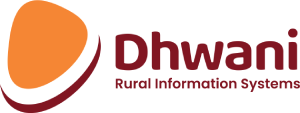Data is the most precious thing in the 21st century and the foundation of most big organizations. Lots of information is freely available on the Internet in the form of data. Organizations can use that free for analysis and making future decisions. But the main problem is it is difficult to copy and paste every time and this will create a problem when you are working on Real-time data. Copy paste method is not relevant. So, What is the Solution?
Here is the Solution:
There are two methods that I have used in most of my projects:
1. Web Crawling
2. Web Scraping
Most of the Information is free on the internet. So, we can use that information for Research, Predict the Future, Insights into the organization and much more depending on your goals. Currently, we are focusing on Python for Web Scraping. Python is a general-purpose language, we can use multiple libraries for scraping. Let’s discuss one by one
What is Web Scraping?
Web Scraping is the method to scrap the data from the webpage by using the Id and path. If you want to use the public data which are available on the internet for further analysis, you can use the web scraping technique to extract that data from the website and store it in your local database.
Using Python, the Requests library is the most effective library for web scraping. All you need is the URL of the webpage, Pass the URL into the Requests library it will scrap the whole HTML page into your terminal. After that, you can extract the information by using the Id Tag or the Xpath
What is Web Crawling?
Just like Web Scraping, Web Crawling is the method to extract valuable information from a web page by automating the URL, But here we are using automation techniques to reach the desired webpage. It means, To create a bot to automate the web page (Most of the time this method is used if the web page requires a login page) and reach the desired or final webpage.
Web crawling is used to extract the necessary information and filter out unnecessary information. For example, if Someone wants to get data from Google or any E-Commerce website, crawling helps them to automate the website and reach the desired output webpage to scrape the necessary data.
Python plays a major role in Scraping the data. There are multiple libraries we can use for statics and analysis of the data.
1. Requests (Get the data from Webpage)
2. BeautifulSoup (Parse the HTML and XML documents)
3. Scrapy (framework for scraping)
4. Selenium (browser automation tool used for crawling )
Why?
By these methods, you can work on real-time data. This will be very helpful for analyzing the data. You can create Indicators to see the progress:
–Content aggregation: Web scraping can be used to gather content from multiple websites and aggregate it into a single location, such as a news aggregator.
–Market research: Web scraping can be used to gather data on customer behaviour, such as what products they are interested in, what websites they visit, and what keywords they search for. This information can be used to gain insights into customer preferences and improve marketing strategies.
Conclusion:
web scraping and web crawling can be valuable tools for collecting data from the internet and extracting insights from it. They can be used to gather information that is not available through other means, and to automate data collection processes.
Risk:
It’s important to use web scraping and web crawling responsibly, as they can have legal and ethical implications if not used properly.
Organizations should be aware of the potential risks of web scraping and web crawling, such as violating terms of service or collecting personal data without consent. They should also invest in the proper tools and resources to help them collect, clean, and analyze the data effectively. With these considerations in mind, web scraping and web crawling can be powerful tools for gathering insights and making data-driven decisions.
This blog is part of our #TechTuesdays Series curated for our CTO For Non-Profits Community




